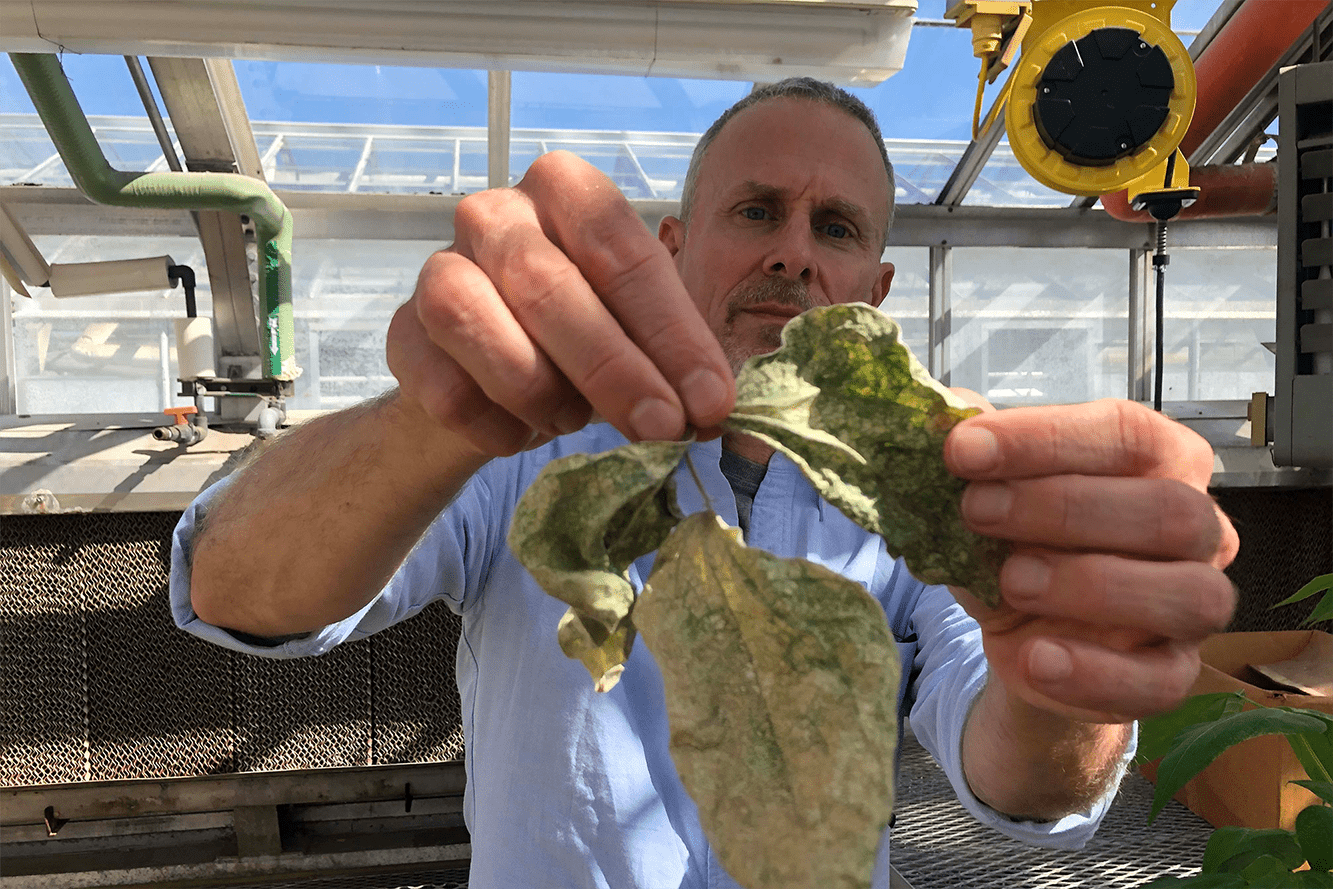
HOW SPIDER MITES QUICKLY EVOLVE RESISTANCE TO TOXINS
Although mites are arthropod-like insects, they have eight legs and are more closely related to ticks, spiders and scorpions. The two-spotted spider mite is tiny, hardly half a millimeter long, and is named for the pair of black spots on either side of its partially translucent body. These spots are actually the digestive contents of its gut.
A ubiquitous inhabitant of greenhouses across the United States, it is equipped with needlelike mouthparts that both pierce and suck nutrients from leaves, leaving them a desiccated shell and killing the plant. They also deposit a silky webbing across the host plant, hence the second half of this mite’s common name.
from leaves, leaving them a desiccated shell and killing the plant. They also deposit a silky webbing across the host plant, hence the second half of this mite’s common name.
“Arthropod pests have been responsible for historic famines and food shortages, and continue to impact human welfare today by reducing crop yields. So there’s been an interest in developing plant varieties which are more resistant to insects or mites,” said Clark, a professor in the School of Biological Sciences.
Working with then-U graduate student and lead author Meiyuan Ji, as well as colleagues from Belgium, Clark’s lab identified a mechanism by which spider mites “express” genes involved in the detoxification [inactivation] of xenobiotics, as is commonly observed in pesticide-resistant spider mites, according to research published this month. The findings could help scientists develop more effective ways to control this pest.
Read the full story by Brian Maffly on this research in @TheU.
